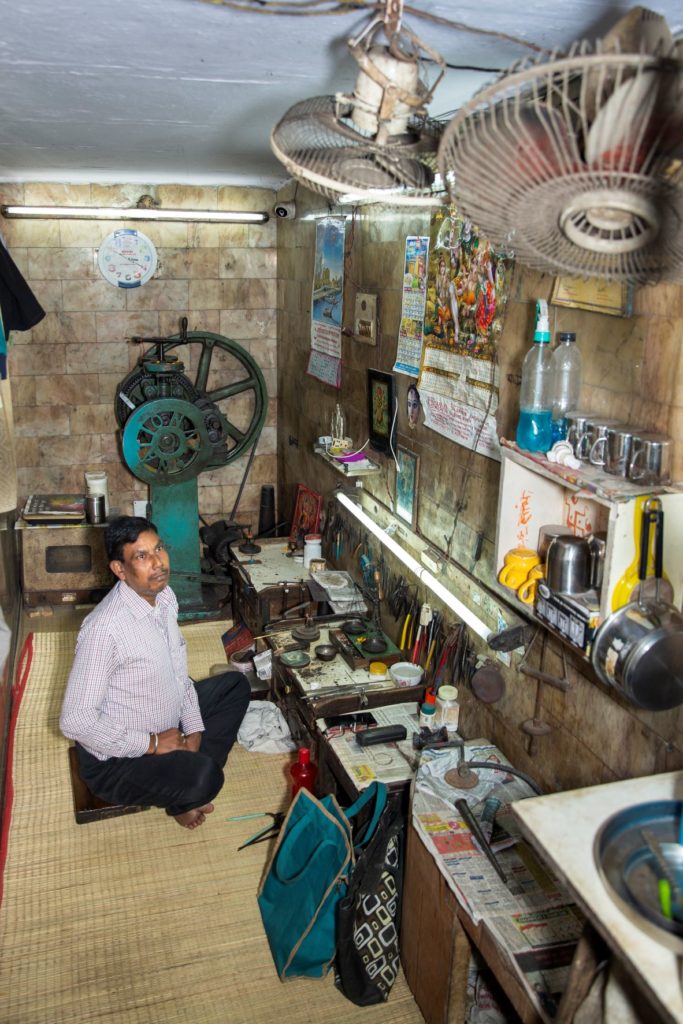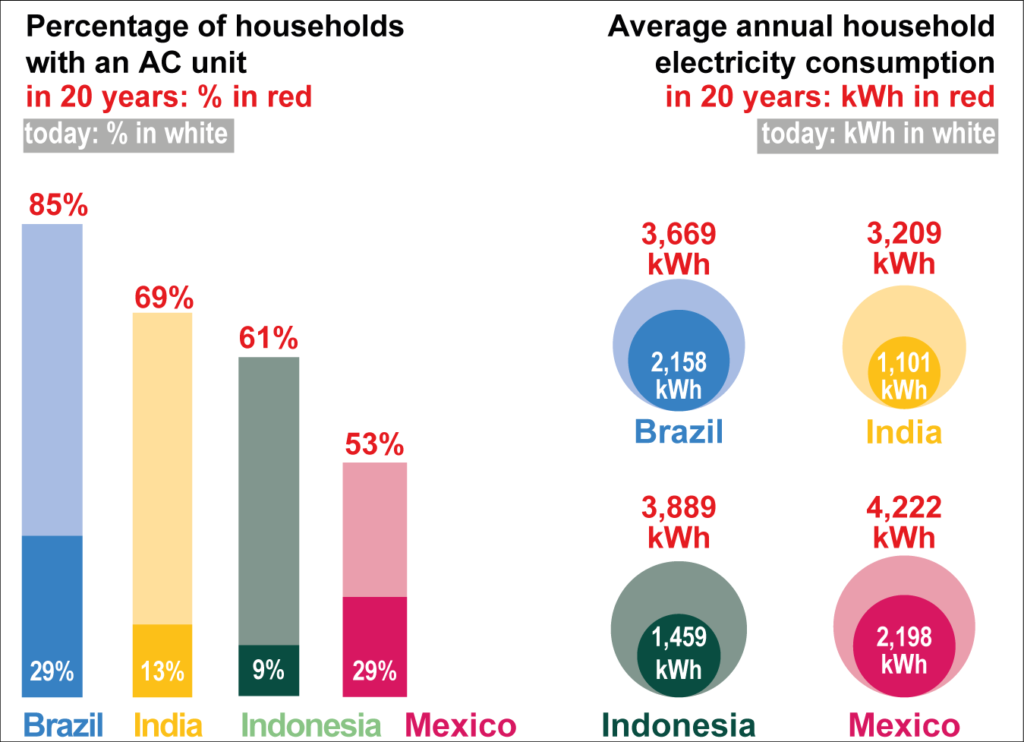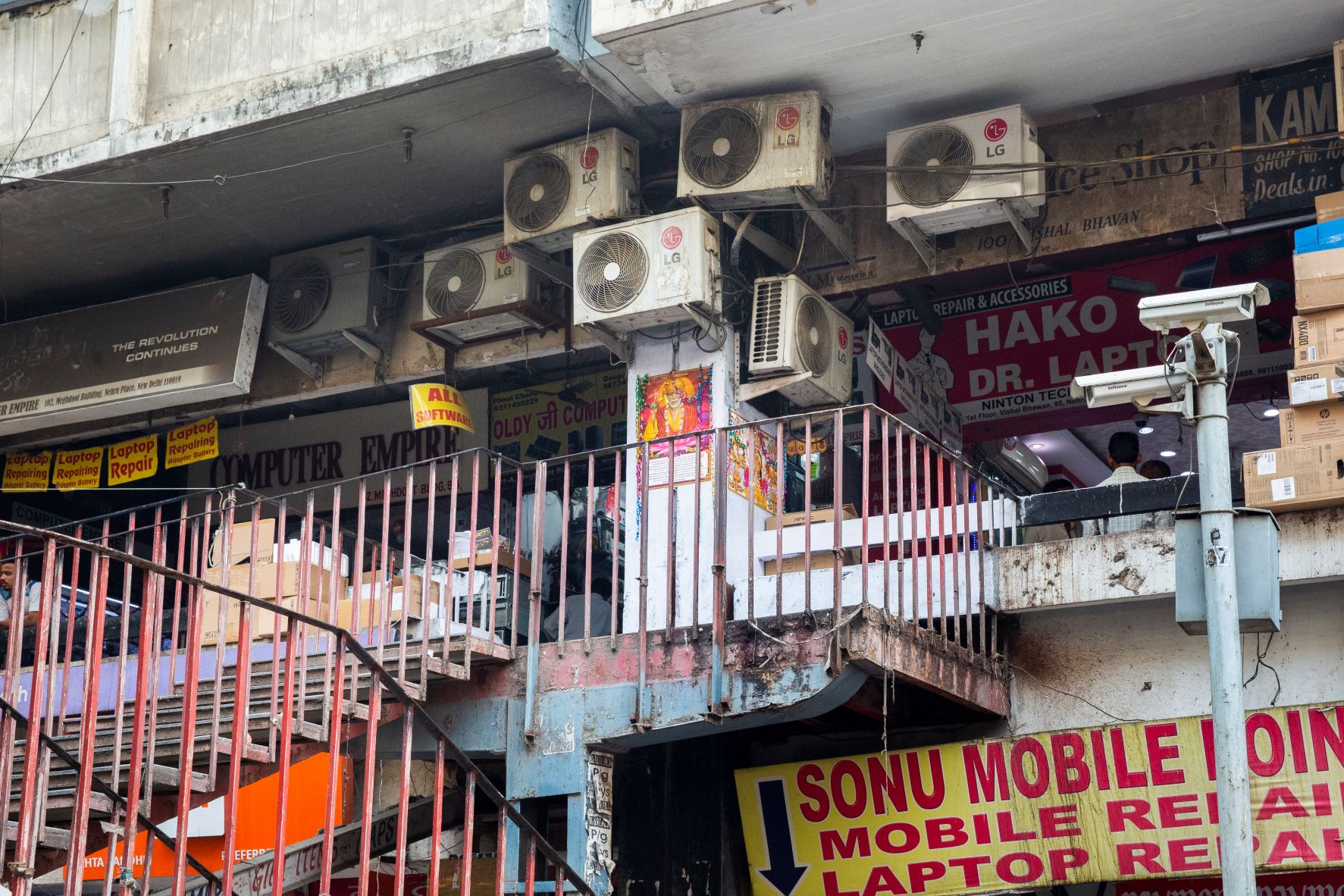| Air-Conditioning and the Adaptation Cooling Deficit in Emerging Economies | |
| Filippo Pavanello, Enrica De Cian, Marinella Davide, Malcolm Mistry, Talita Cruz, Paula Borges, Dattakiran Jagu, Sebastian Renner, Roberto Schaffer, André F. P. Lucena | |
| Nature Communications , volume 12, Article number: 6460 (2021) - November 2021 |
Our latest research paper looks at India, Brasil, Mexico and Indonesia and reveals that by 2040 between 64 and 100 million households will not be able to meet their cooling requirements, finding themselves in a situation of potential discomfort. This will be particularly pronounced in states with high urbanization levels, hot and humid climates, or poor economic conditions.

Our study analyzes the determining factors driving the emerging cooling crisis with an evaluation of its consequences in 2040. This study is the first multi-country, comparative analysis of how climate and household characteristics, including income, drive air-conditioning adoption in four emerging countries: Brazil, India, Indonesia, and Mexico.
AC will skyrocket
AC adoption rates will skyrocket over the next 20 years, leading to more than half of households being equipped with an AC unit: 85% in Brazil, 61% in Indonesia and 69% India. This will also lead to an increase in electricity consumption, which will triple in India and Indonesia, and almost double in Mexico and Brazil.

Adoption of air-conditioning across states will increase in all socio-economic and climate scenarios considered and the demand for the large amounts of energy needed to power all these new appliances will also generate CO2 emissions. Future research is needed to look at the potential environmental consequences of this vicious cycle.
What drives AC adoption
The role of income and climate in future projections has been overestimated in previous studies, due to a failure to consider household characteristics. It is not just a story of a changing climate or affluence levels, which are improving. Our results suggest that AC adoption patterns are determined by multiple drivers, with different importance across countries.

Indeed, in emerging economies, the decision to purchase air-conditioning in response to warmer climatic conditions is strongly anchored to socio-economic and demographic characteristics. However, besides income, what really appears to influence decisions to purchase an AC unit are housing conditions, education, employment, gender, age of the household’s head, and whether they live in urban or rural areas.
A costly and unequal adaptation tactic
“Increasing the use of electricity for residential space cooling is a form of adaptation that helps relieve people from heat stress but it is no panacea, as electricity expenditure will limit opportunities among the lowest income households. Even those with air-conditioning will be exposed to a new condition of vulnerability related to supply shortage in the power sector, such as the recent Canadian experience, or degraded power stability. The implication is that, it is imperative to manage the growing appetite for residential space cooling by using a mix of efficiency measures, policies, and technologies,” says Roberto Schaeffer from the Energy Planning Program at the Universidade Federal do Rio de Janeiro.
The adaptation cooling deficit
The actual and potential demand for air-conditioning should be interpreted in a broader sense as a measurable proxy of the needs for improved thermal comfort. And this is how our new concept of adaptation cooling gap should be used. For example, the state of Rio de Janeiro today is in a situation of high exposure to degree days and of higher-than-average AC adoption, but in the future it is expected to transit to a situation of greater thermal discomfort with increased exposure to degree days but lower-than-average AC adoption.
>> Compare different socio-economic and climate scenario with Tableau<<
Main results per country
Indonesia and India have the highest numbers of hot and humid days, and indeed the use of AC units closely mirrors patterns of climate conditions, though urbanization and access to electricity play a mediating role.
- In India, for example, the highest numbers of hot and humid days are observed in the states of West Bengal, Assam, Uttar Pradesh, and Orissa, but these states are not associated with the most widespread use of air-conditioning.
- Although Indonesia has the highest values of hot and humid days, households rarely own air-conditioning units, except for the wealthiest districts of Jakarta and the Riau Islands.
- In Brazil, the state of Rio de Janeiro shows relatively high adoption rates for air conditioners, despite the lower number of annual hot and humid days compared to its northern states, where urbanization is low.
- In Mexico, the average ownership rates in the hotter states are already high, reaching 73% in Sonora or 77% in Sinaloa.
